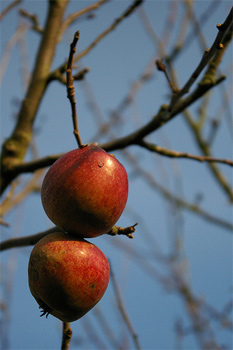Bring Johnny Appleseed to the South Side
By JoshMogerman in Food on May 21, 2011 8:00PM
Walk out, grab an apple off the tree, and voilas, breakfast is served. It seems like a pretty simple concept---a pastoral answer to the vexing urban issue of food deserts. Since folks around town don’t have access to grocery stores with fresh fruit, why not just grow it? Alas, things are never so simple.
While there are a slew of great urban farming initiatives around town, fruit trees haven’t exactly proliferated. The Chicago News Cooperative reported on a study that showed only two fruit trees in Chicago. It was clearly a flawed evaluation, since the darn mulberry tree that stains the concrete by Chicagoist’s Bronzeville outpost every year was nowhere to be found in the results of the Google Earth-based study... But, the broader point is right on.
Even as the City plants thousands of trees around town every year, only a teeny-tiny fraction of them pull double duty by also bearing fruit. Few fruit trees show up in the City’s full list of approved species for planting---and none of them are in their top-10. The CNC story notes that Streets and San considers fruit trees messy and a pain to manage. While that is probably true, other departments seem more open to the idea. The Park District planted apple, pear and plum trees in Kilbourn Park a few years back. And as part of the Chicago Trees program, 500 native fruit and nut trees were slated for planting at schools to eventually contribute to the lunch program (that now seems less likely, though we have not seen any updates on the proposal).
Just because the City isn’t playing Johnny Appleseed doesn’t mean nothing is happening. The Fruit Tree Foundation’s “Communities Take Root” program will plant 20 urban orchards all over the country. Online voting has begun to whittle down 130 applicants and there are a mess of worthy Chicago neighborhoods and parks represented that could really use the fruit trees, including: Douglas Park, Garfield Park, Humboldt Park, Jackson Park and Washington Park. The Greater Grand Crossing neighborhood on the South Side currently has the edge in national voting with a proposal from the Gary Comer Youth Center and Make Miracles Grow Foundation to redevelop a two-acre brownfield into an urban farm. That’s how you pour water on a food desert: vote early and often Chicago.
